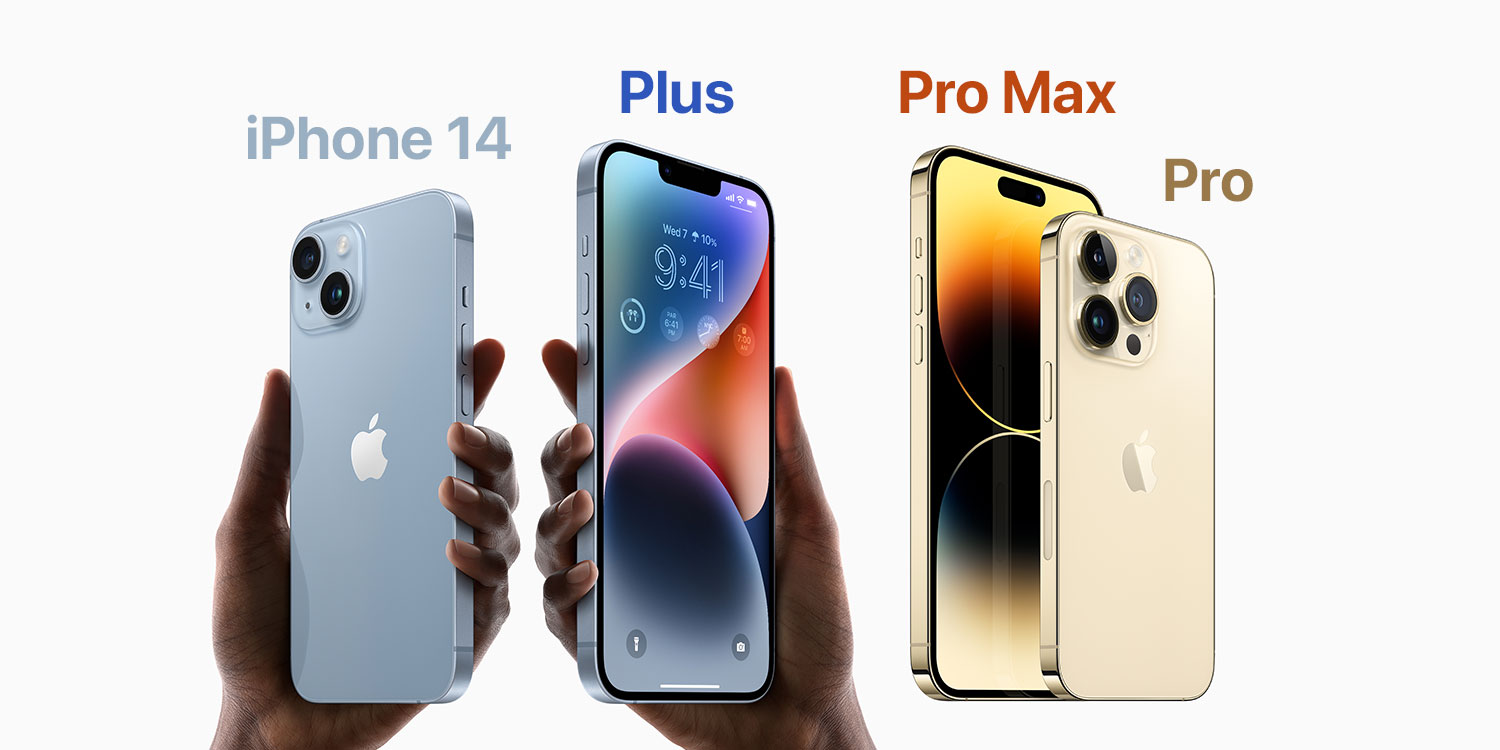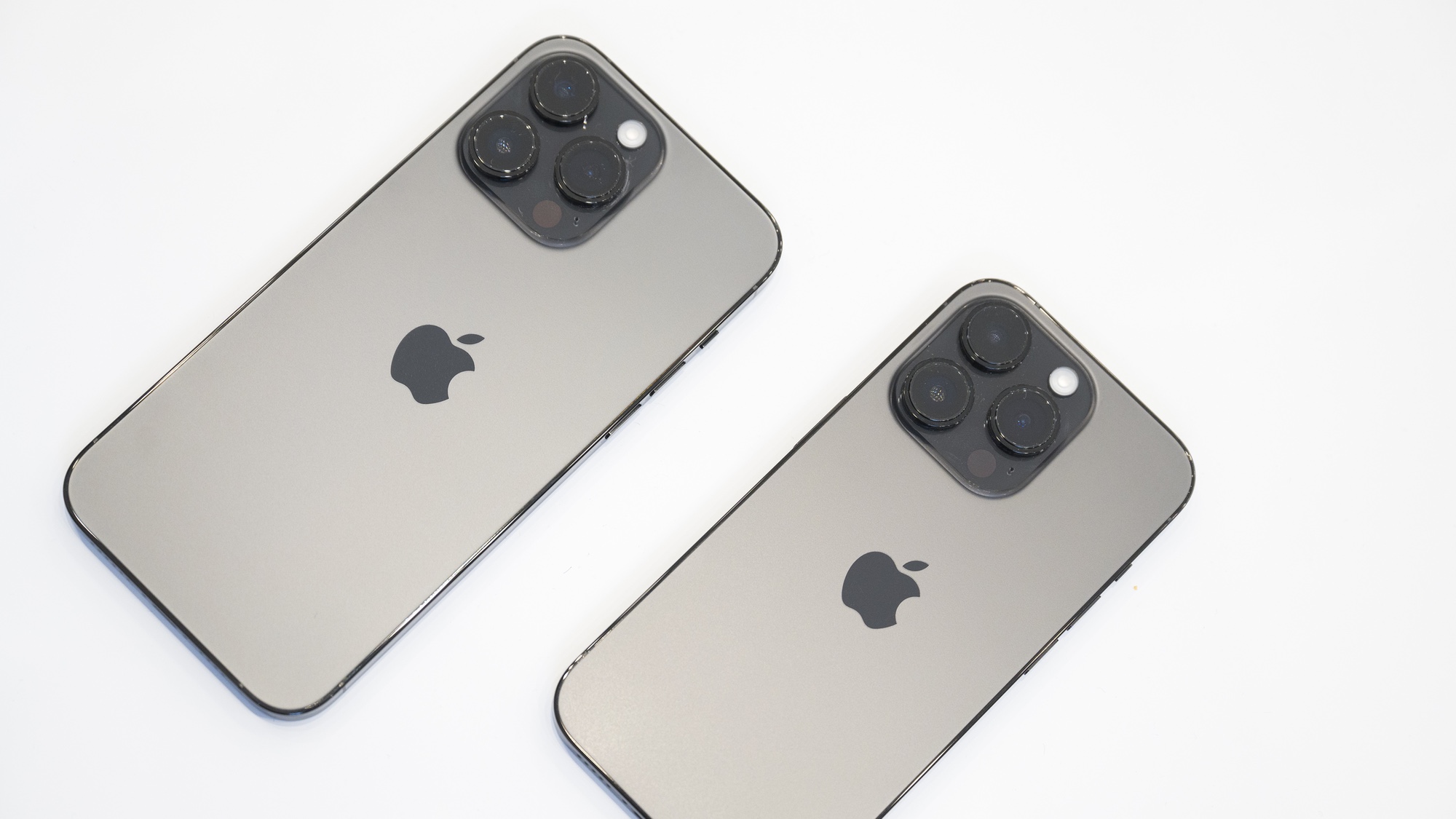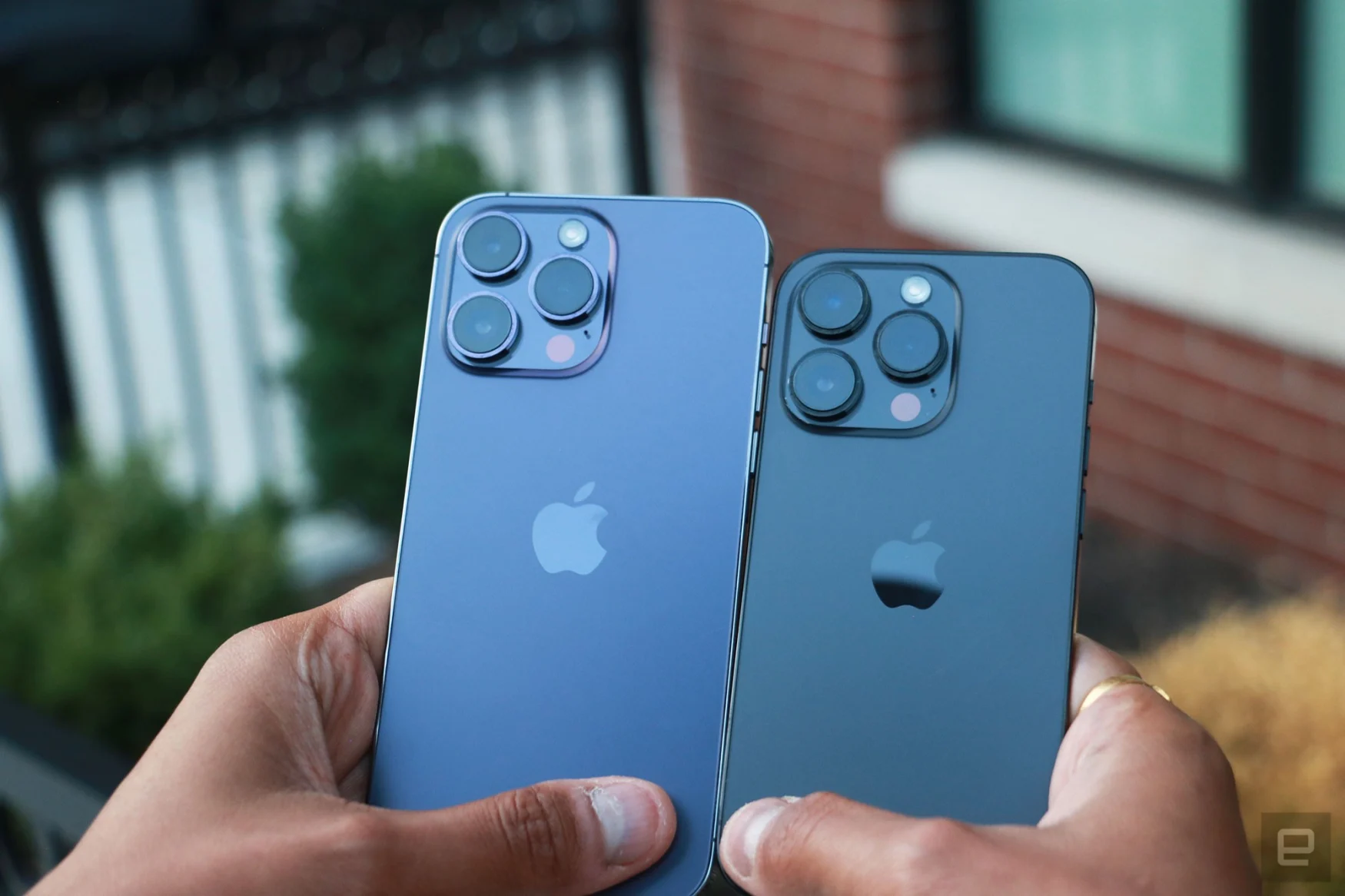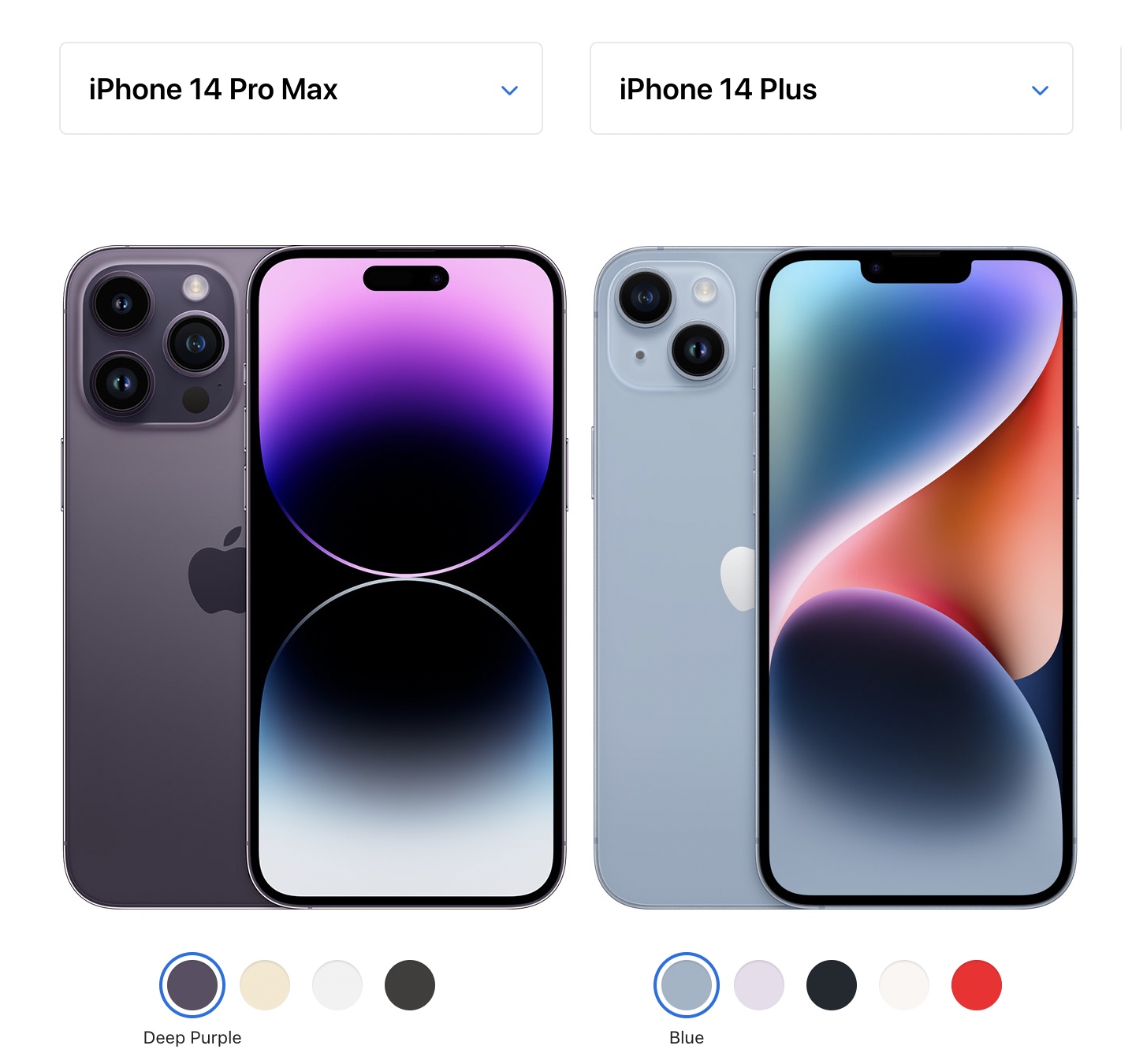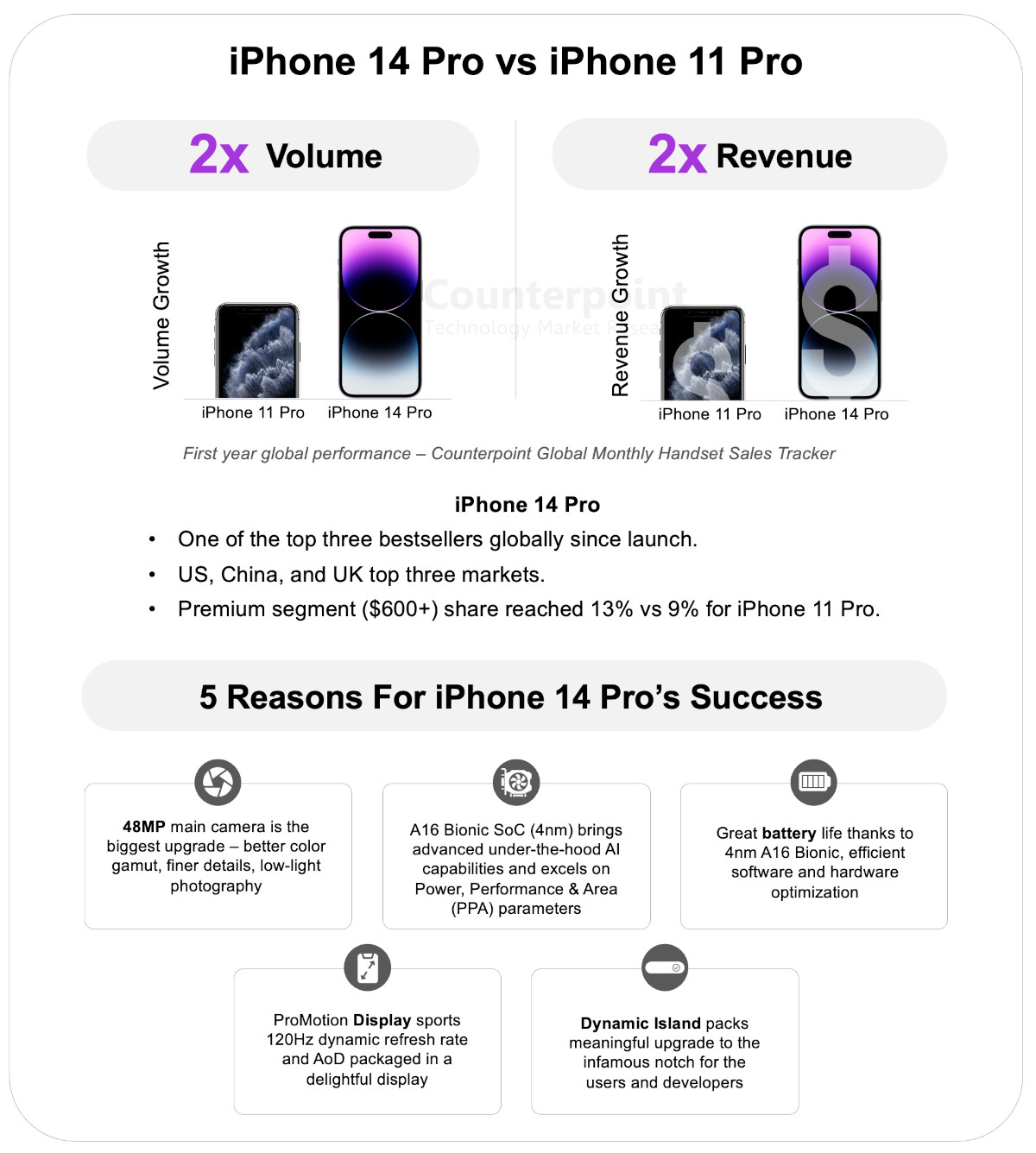Oppdag forskjellene mellom iPhone 14 Pro og 14 Pro Max. Les om størrelse, skjerm, kameraer og batterilevetid. Finn den beste modellen for deg.
Innholdsfortegnelse
Design
The iPhone 14 Pro and 14 Pro Max feature a similar aesthetic design with stainless steel rails and a matte finish on the back. Both models also have the Dynamic Island, a context-aware cutout at the top of the screen that can display notifications and other activities. However, there are differences in terms of size and display.
Size and Display
The iPhone 14 Pro has a 6.1-inch Super Retina Pro XDR display, while the 14 Pro Max sports a larger 6.7-inch screen. The Pro Max's display can occasionally get brighter, but the difference is hardly noticeable in day-to-day use. The Pro Max's larger screen is ideal for those who enjoy gaming or watching content on their phones, while the Pro's more compact size allows for easier one-handed use.
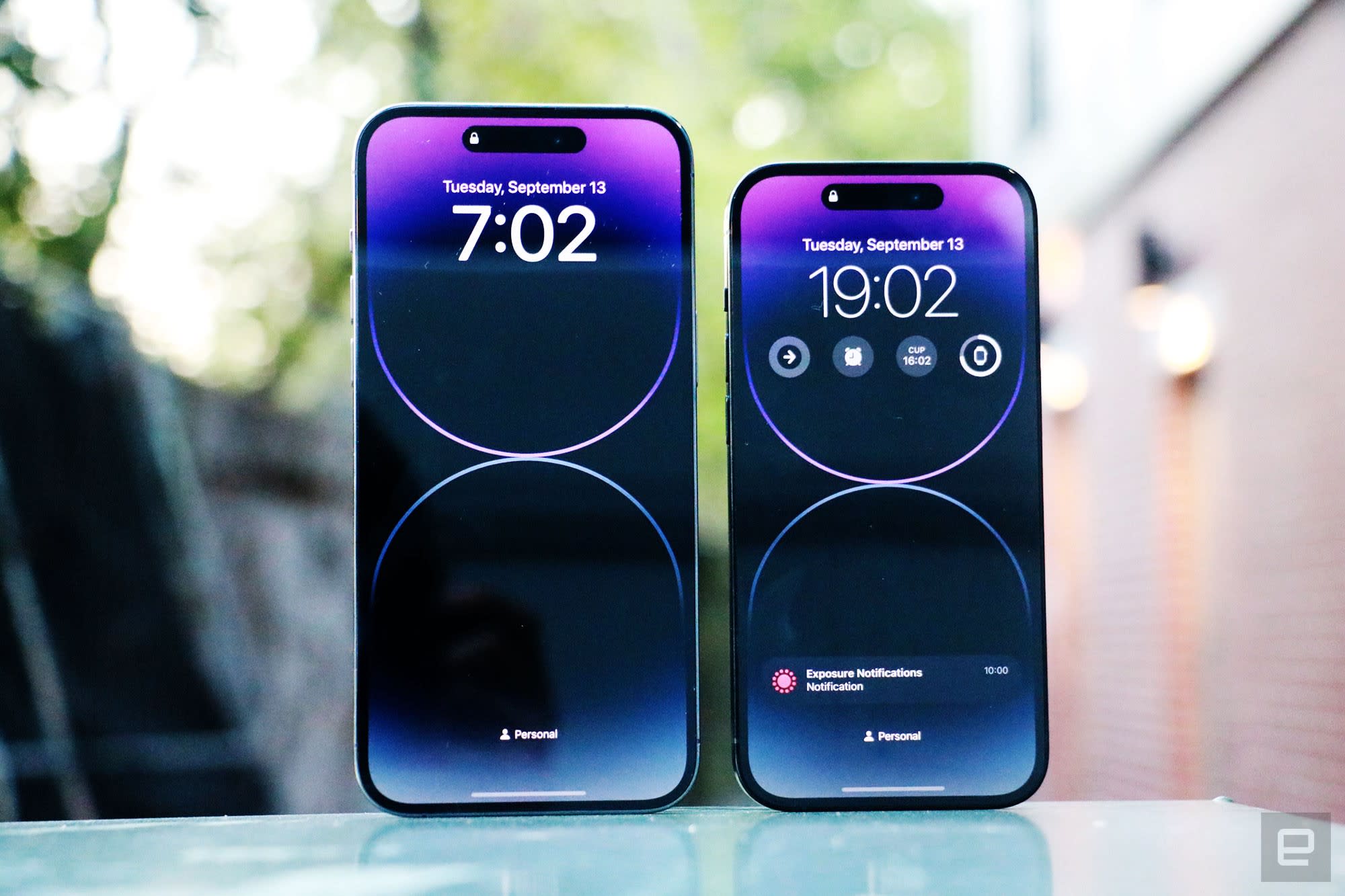
Cameras
One of the notable differences between the iPhone 14 Pro and 14 Pro Max is the camera setup. Both models have a 48MP main camera sensor, a significant upgrade from the 12MP camera sensor of previous models. Additionally, both models feature the Dynamic Island, which enhances the interface and allows for Always On lock Display functionality.
Camera Features
- The iPhone 14 Pro and Pro Max offer macro photography capabilities, allowing users to focus on small elements from as close as 2 centimeters.
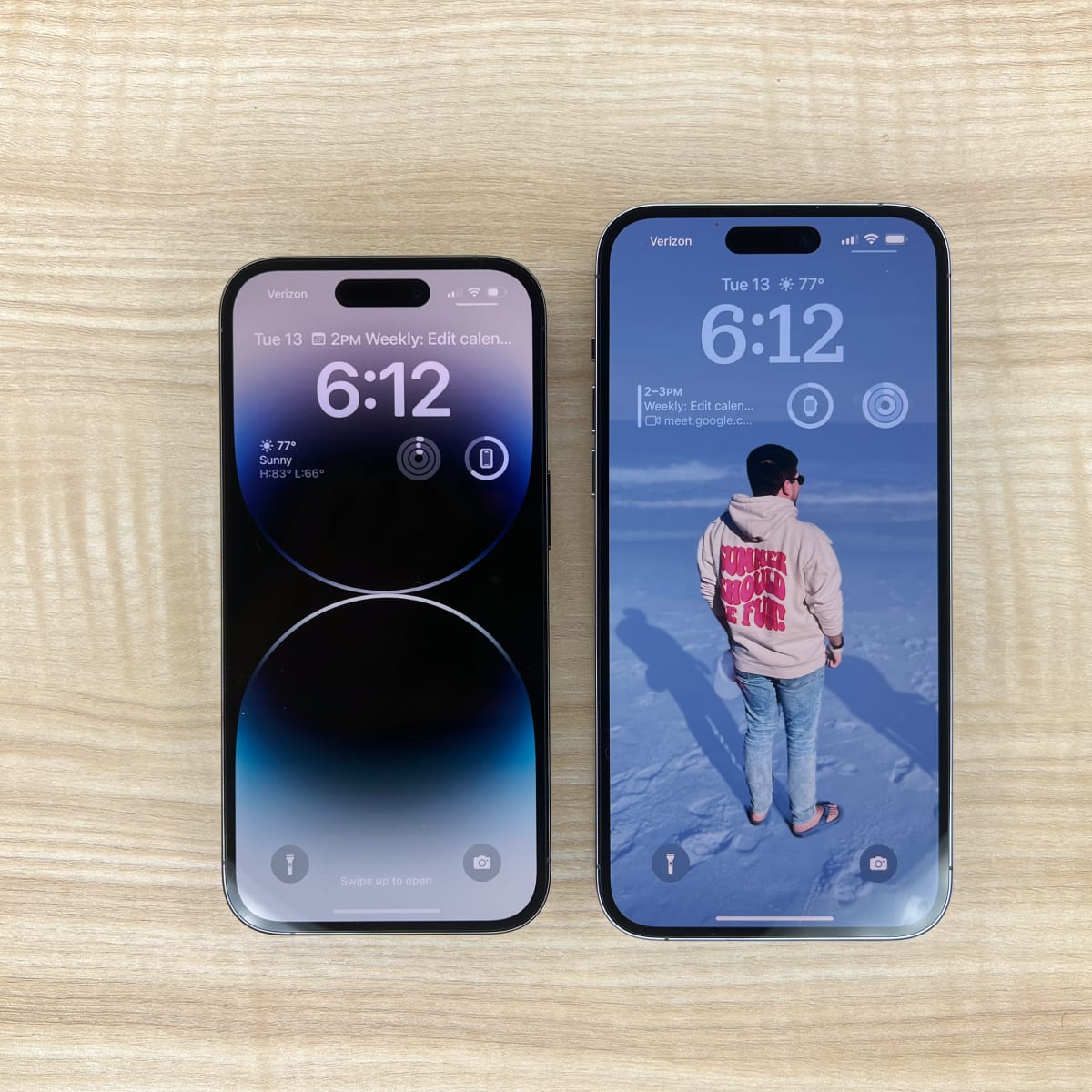
Battery Life
Battery life varies between the iPhone 14 Pro and 14 Pro Max due to their size differences. The Pro Max, with its larger dimensions, has a larger battery, which results in longer battery life compared to the Pro model.
Se også
Summary of Specifications
Here is a summary of the key specifications for the iPhone 14 Pro and 14 Pro Max:
| Specification | iPhone 14 Pro | iPhone 14 Pro Max |
|---|---|---|
| Display | 6.1-inch Super Retina Pro XDR | 6.7-inch Super Retina Pro XDR |
| Main Camera | 48MP | 48MP |
| Dynamic Island | Yes | Yes |
| Battery Life | Varies | Longer than iPhone 14 Pro |
The iPhone 14 Pro and 14 Pro Max are both powerful smartphones from Apple, offering high-performance capabilities and impressive camera features. The choice between the two models ultimately comes down to personal preferences regarding size, display, and battery life.
Disclaimer: The information provided in this article is based on the specifications of the iPhone 14 Pro and 14 Pro Max as of September 2022. Please note that technology specifications may change over time, and it is advisable to refer to the official Apple website or authorized retailers for the latest information.
References:
- Apple.com
- TechRadar.com
- MacRumors.com

Hva vil Wiki fortelle oss?
The iPhone 14 Pro and iPhone 14 Pro Max are smartphones designed, developed, and marketed by Apple Inc. They are the sixteenth-generation flagship iPhones, succeeding the iPhone 13 Pro and iPhone 13 Pro Max. The devices were unveiled alongside the iPhone 14 and iPhone 14 Plus during the Apple Event at Apple Park in Cupertino, California, on September 7, 2022. Pre-orders for the iPhone 14 Pro and 14 Pro Max began on September 9, 2022, and were made available on September 16, 2022. Being, along with the iPhone 14 and 14 Plus, the last iPhones to use a Lightning port, the iPhone 14 Pro and 14 Pro Max were discontinued on September 12, 2023, following the announcement of their successors, the iPhone 15 Pro and 15 Pro Max, which replaces the Lightning port with USB-C to comply with European Commission regulations.
The iPhone 14 Pro and iPhone 14 Pro Max are the first iPhones to have a new type of display cutout called "Dynamic Island", replacing the notch design that has been in use since the iPhone X was introduced. Along with the iPhone 14, iPhone 14 Pro models add bidirectional satellite connectivity to contact emergency services when out of range of Wi-Fi and cellular networks. iPhone 14 Pro and iPhone 14 Pro Max models (as well as the iPhone 14 and 14 Plus) sold in the United States dropped support for physical SIM cards, making them the first iPhone models since the CDMA variant of the iPhone 4 to lack a discrete SIM card reader.




